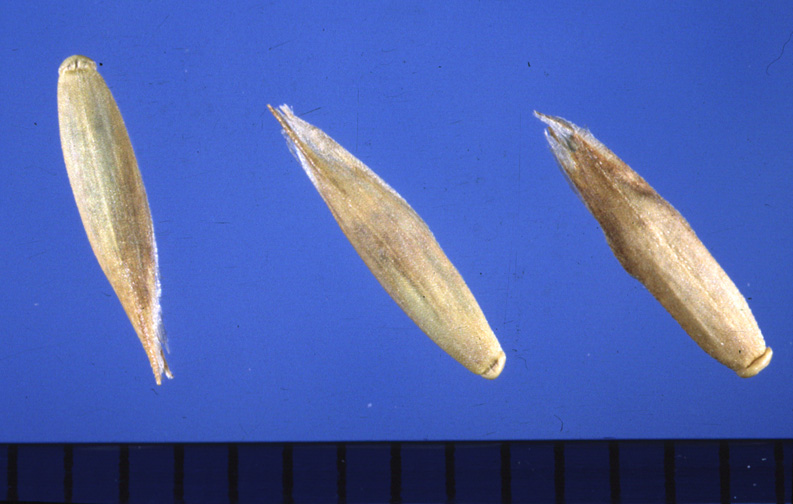Tall Fescue (Schedonorus arundinaceus)
Family:
Grass Family (Poaceae)
Other Names:
Festuca arundinacea, Festuca elatior, Lolium arundinaceum, alata fescue, coarse fescue, meadow fescue, reed fescue, taller fescue.
Origin and Distribution:
A native of Europe, tall fescue was brought to North America by settlers in 1886, and is currently found throughout the U.S. It is a valuable grass species because it can grow in a variety of soil and climatic conditions. Since the 1940's, it has been used for forage, turf and erosion control. Unfortunately, it often escapes cultivation and can be found growing weedy in reduced-tillage crops, turf and fields, as well as in roadsides and waste areas. Tall fescue is distributed throughout Ohio, and is cultivated in the southern portion of the state. Although it prefers cool growing conditions, tall fescue will tolerate hot summers. In addition, this plant is tolerant of both drought and poorly drained areas.
Plant Description:
Tall fescue is a coarse, clump-forming, cool-season perennial grass, characterized by its relatively wide, dark green, coarsely ridged leaves. This species reproduces by seeds and short rhizomes (horizontal underground stems). Clumps can expand by producing new shoots (tillers) from the base of existing stems. Tall fescue can form dense stands.
Root System:
Tall fescue produces short rhizomes (horizontal underground stems) and tough, coarse roots that run deep into the soil.
Stems:
Stems are smooth, erect and round, and grow 3 to 5 feet high.
Leaves:
Leaves are rolled in the bud. The dark green leaf blade (free part of the leaf) is thick, flat, ridged on the upper surface due to coarse veins, and shiny on the lower surface. Blades are 4 to 24 inches long and 1/6 to 1/2 inch wide, and have rough margins and often a yellowish base (where it meets the stem). The leaf sheath (part of the leaf surrounding the stem) is round and smooth. The ligule (projection inside on the top of the sheath) is short and membranous. A pair of small, rounded appendages (auricles) are located at the top of the sheath, and are fringed with hairs.
Flowers:
Clusters of flowers are borne in an open, many-branched flower head (2 to 12 inches long, sometimes up to 16 inches) at the top of the stem. Branches of the flower head are folded up against the stem before and after flowering, giving the flower head a spike-like appearance.
Fruits and Seeds:
Seeds are 1/4 inch long, narrow and dark, with a purplish tinge.
Similar Species:
Quackgrass (Elytrigia repens) and ryegrasses (Lolium spp.) may be distinguished from tall fescue by the long, claw-like projections (auricles) found at the top of sheath, which are highly reduced in tall fescue.
Biology:
Flowering occurs between May and June. Tall fescue clumps can enlarge by tillering (producing new shoots from the base of stems).
Toxicity:
Tall fescue is often infected with an endophytic ("living within the plant") fungus that produces compounds toxic to cattle and horses. Cattle grazing on tall fescue may develop several conditions, including "fescue foot, fescue toxicosis ("summer slump"), and abdominal fat necrosis. Toxins are present in infected fescue throughout all seasons, and persist in hay as well. Tall fescue may also contribute to hay fever.
Facts and Folklore:
Tall fescue has become a serious problem in remnant prairies in the Midwest and Texas.
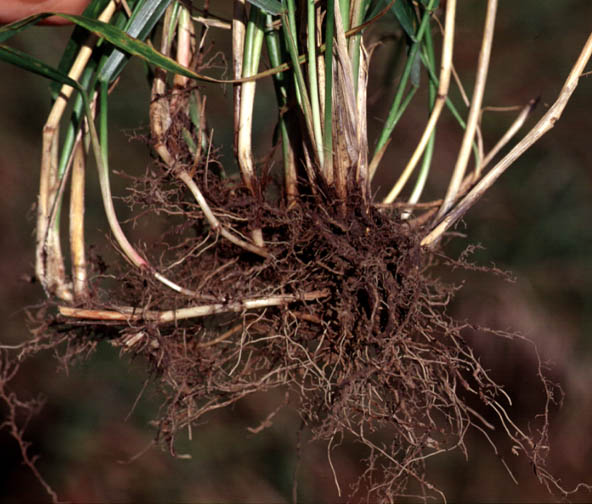
Tall fescue short rhizomes (some sources say it has none).
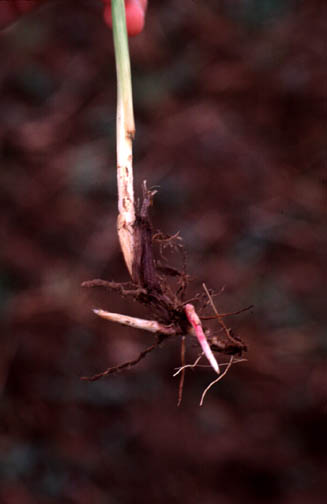
Tall fescue seedling.
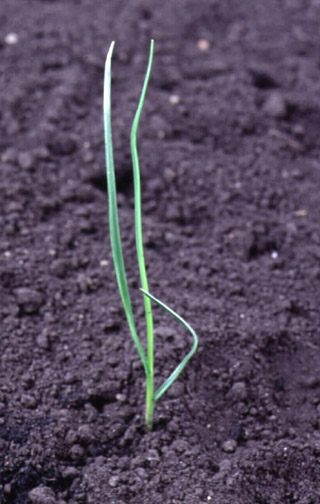
Tall fescue seedling.
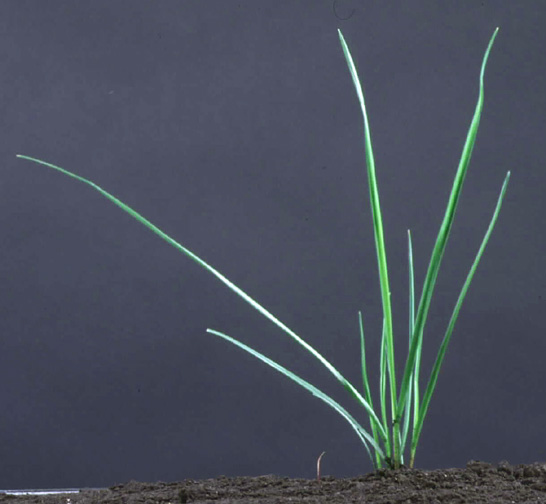
Tall fescue collar, clasping auricles, and ridged leaf.
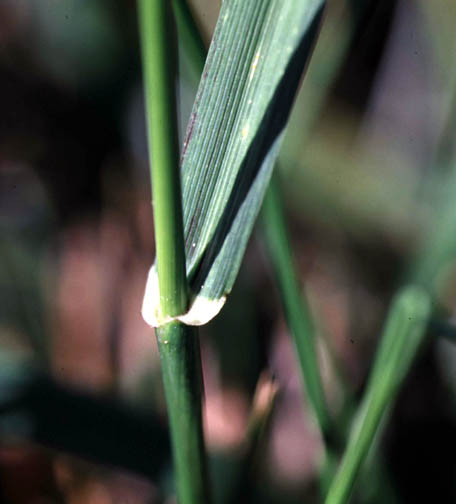
Tall fescue leaf blade showing prominent ridges.
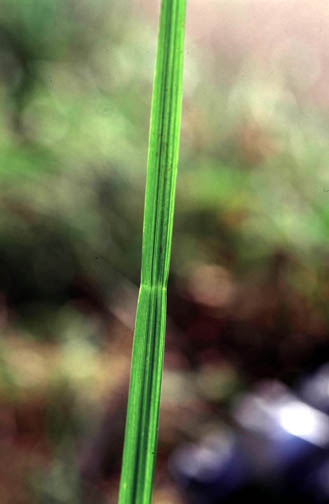
Tall fescue leaf blade and inflorescences.
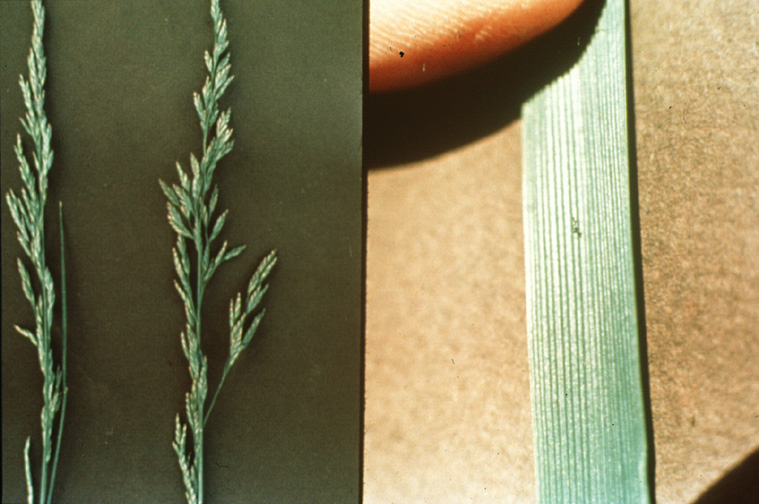
Tall fescue inflorescence.
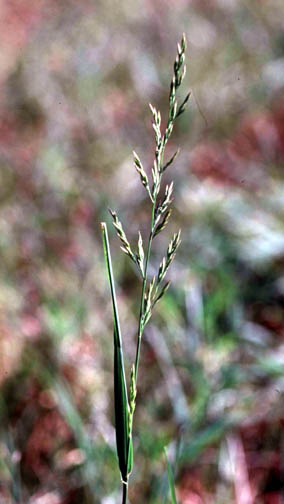
Tall fescue seeds.
